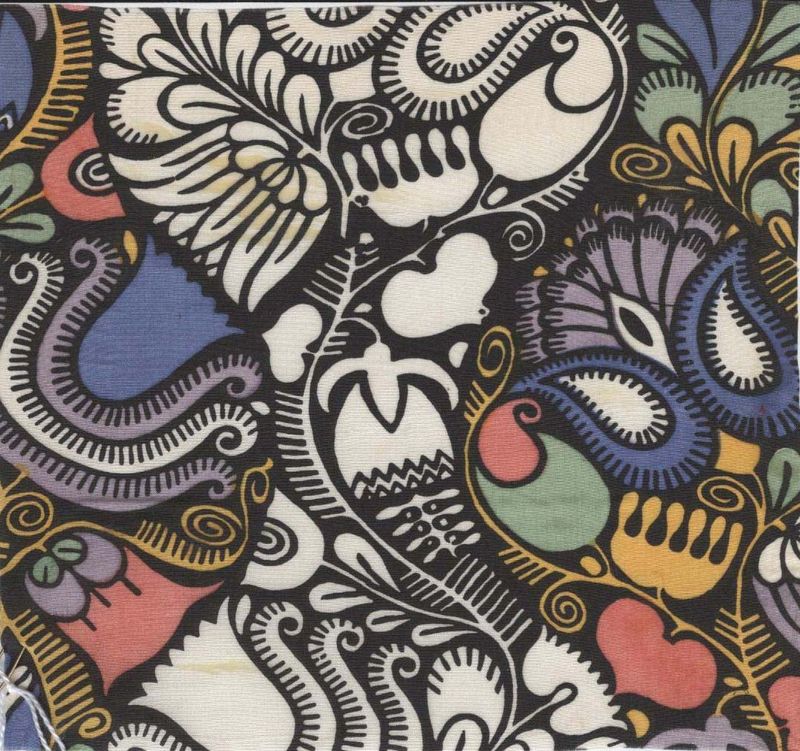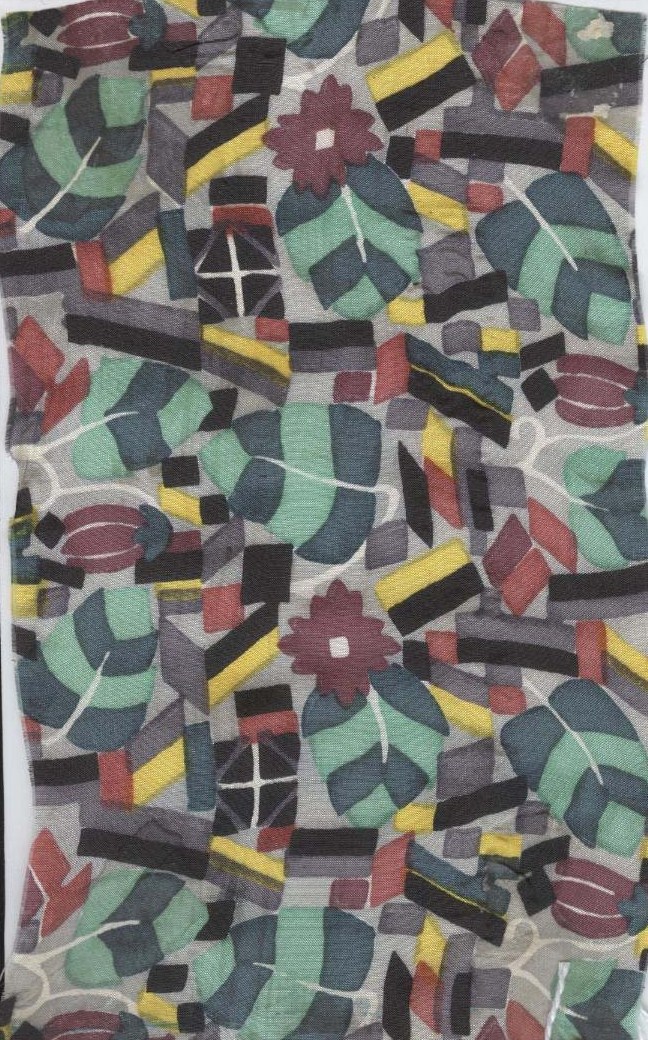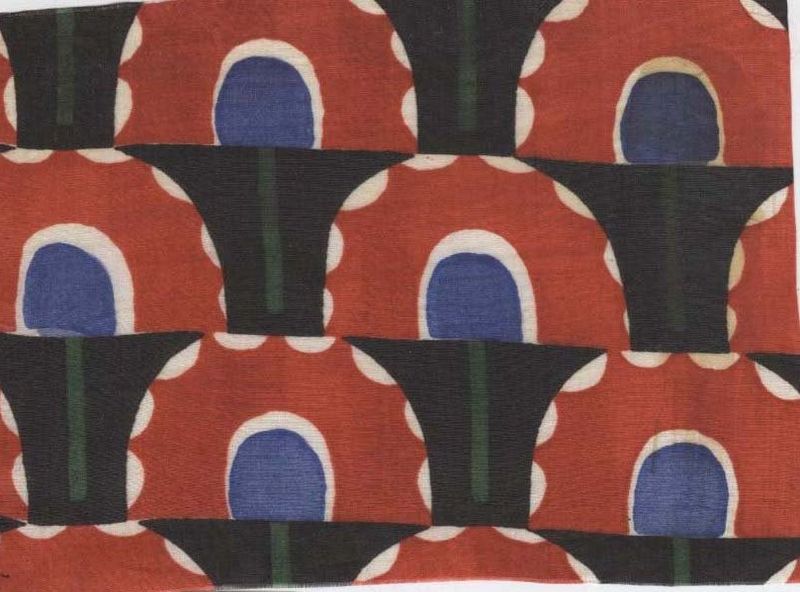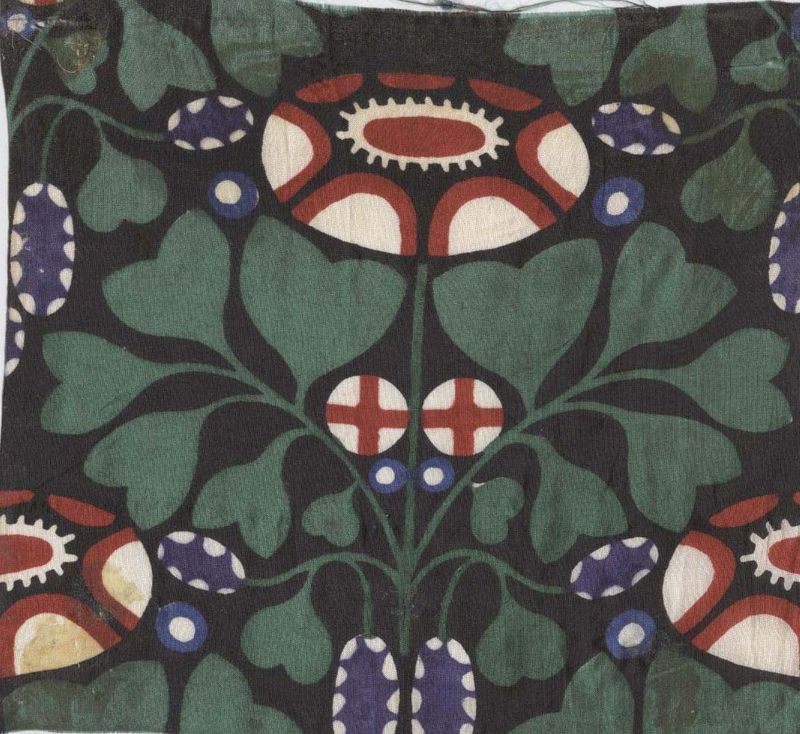Wiener Werkstatte textiles
Remember this post about found textiles? Today's post features a group of Wiener Werkstatte textiles from the same collection. The Wiener Werkstatte (Vienna Workshop) was an artistic collective based on an interest in eliminating the gap between fine art and crafts. Founded in 1903 by architect Josef Hoffman and artist Kolomon Moser, the Wiener Werkstatte's goal was to design and produce all objects needed in daily life. Consisting of a design school, studios for established designers, a production workshop and retail outlet, the Wiener Werkstatte's goal was to improve everyday life through excellent design and craftsmanship. From large scale architectural commissions to furniture and small decorative objects for the home, the designers associated with the Wiener Werkstatte envisioned all aspects of life united under a single artistic aesthetic, with all elements blending into a harmonious whole. The designs were brought to life by skilled craftspeople who worked under extremely progressive conditions. From as early as 1905, the Wiener Werkstatte produced occasional textile designs for use in interiors. From 1910, the Wiener Werkstatte established a textile workshop where textiles were both designed and printed. Though sources differ, at least 1,800 different designs were produced in multiple colorways by 80-100 artists. These textiles were used in Wiener Werkstatte designed interiors and fashions and were also purchased by other designers. Paul Poiret was particularly fond of Wiener Werkstatte textiles, using them in his own designs and establishing the Atelier Martine textile workshop, which was modeled on the Wiener Werkstatte. Though the textile designs certainly stand on their own, Poiret's interest probably helped Wiener Werkstatte textiles become the "Wiener Werkstatte's greatest international success."1 When the Wiener Werkstatte workshops began to shut-down in 1930-31, the textile workshop was the last workshop to close, a certain testament to its success. Though the aesthetic of the Wiener Werkstatte leaned towards relatively unornamented geometric shapes and solid colors, Wiener Werkstatte textiles are exuberant in both color and design. Despite the sheer number of designers, Wiener Werkstatte textiles are generally united in their use of bright colors and fairly dense stylized patterns. All textiles produced by the Wiener Werkstatte were printed with "Wiener Werkstatte" and the pattern name in the selvedge. Though our textile swatches don't bear this information, we have been able to identify the pieces below through extensive research. Enjoy!
 "Konstantinopel" textile swatch Ugo Zovetti Wiener Werkstatte 1910-12 Gift of Robert Fortunoff 99.274.98
"Konstantinopel" textile swatch Ugo Zovetti Wiener Werkstatte 1910-12 Gift of Robert Fortunoff 99.274.98
 "Leopard" textile swatch Arch E. Wimmer Wiener Werkstatte 1912 Gift of Robert Fortunoff 99.274.97
"Leopard" textile swatch Arch E. Wimmer Wiener Werkstatte 1912 Gift of Robert Fortunoff 99.274.97
 Textile swatch Wilhelm Jonasch Wiener Werkstatte 1911-1910 Gift of Robert Fortunoff 99.274.102
Textile swatch Wilhelm Jonasch Wiener Werkstatte 1911-1910 Gift of Robert Fortunoff 99.274.102
 "Vorgarten" textile swatch Wilhelm Jonasch Wiener Werkstatte 1911-1912 Gift of Robert Fortunoff 99.274.103 1 Hess, Heather. "The Wiener Werkstatte and the Reform Impulse." Producing Fashion: Commerce, Culture and Consumers ed. Regina Blaszczyk. Philadelphia: University of Penn Press. 2008: 129.
"Vorgarten" textile swatch Wilhelm Jonasch Wiener Werkstatte 1911-1912 Gift of Robert Fortunoff 99.274.103 1 Hess, Heather. "The Wiener Werkstatte and the Reform Impulse." Producing Fashion: Commerce, Culture and Consumers ed. Regina Blaszczyk. Philadelphia: University of Penn Press. 2008: 129.